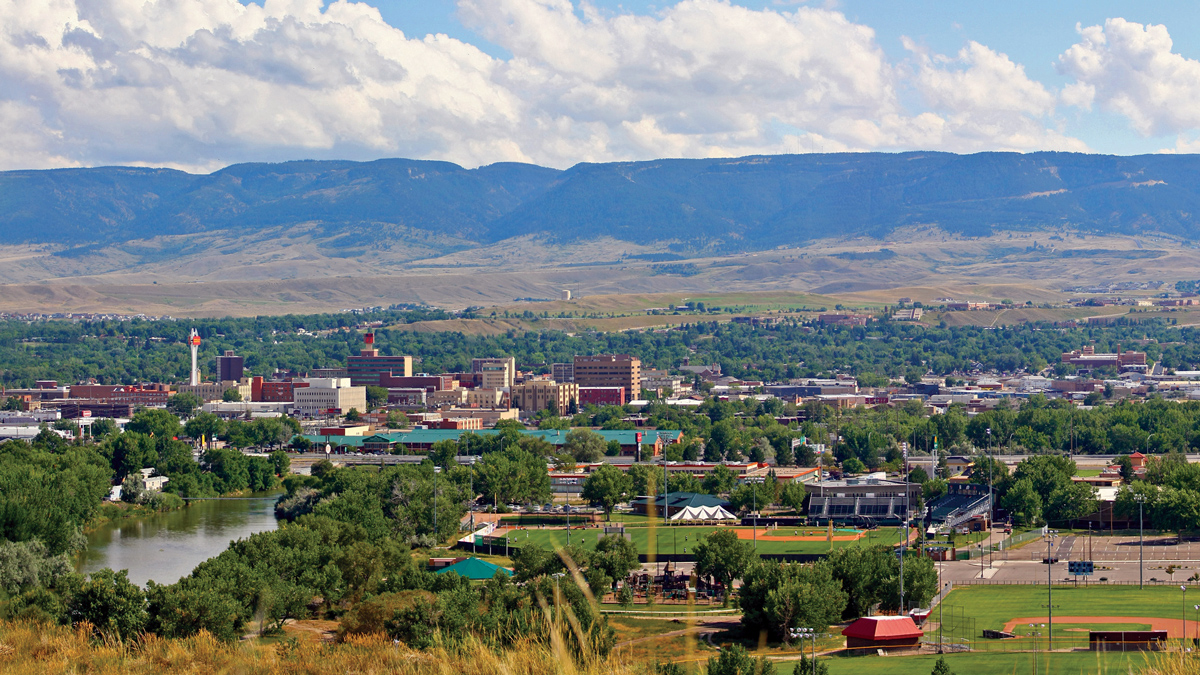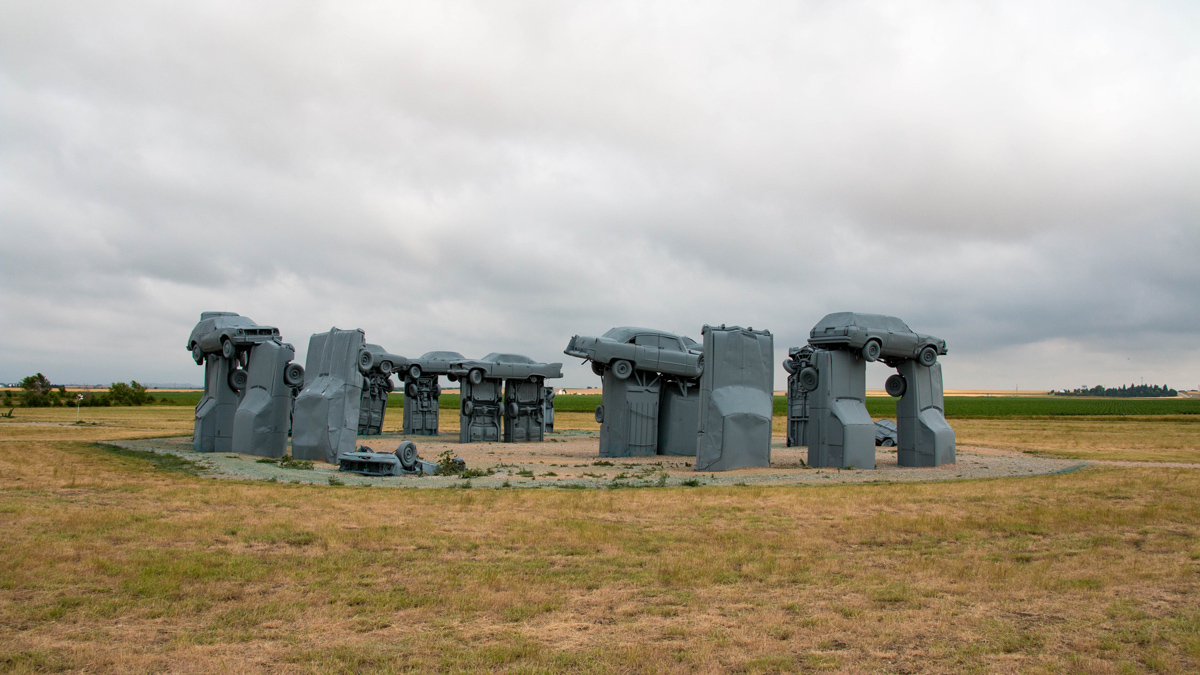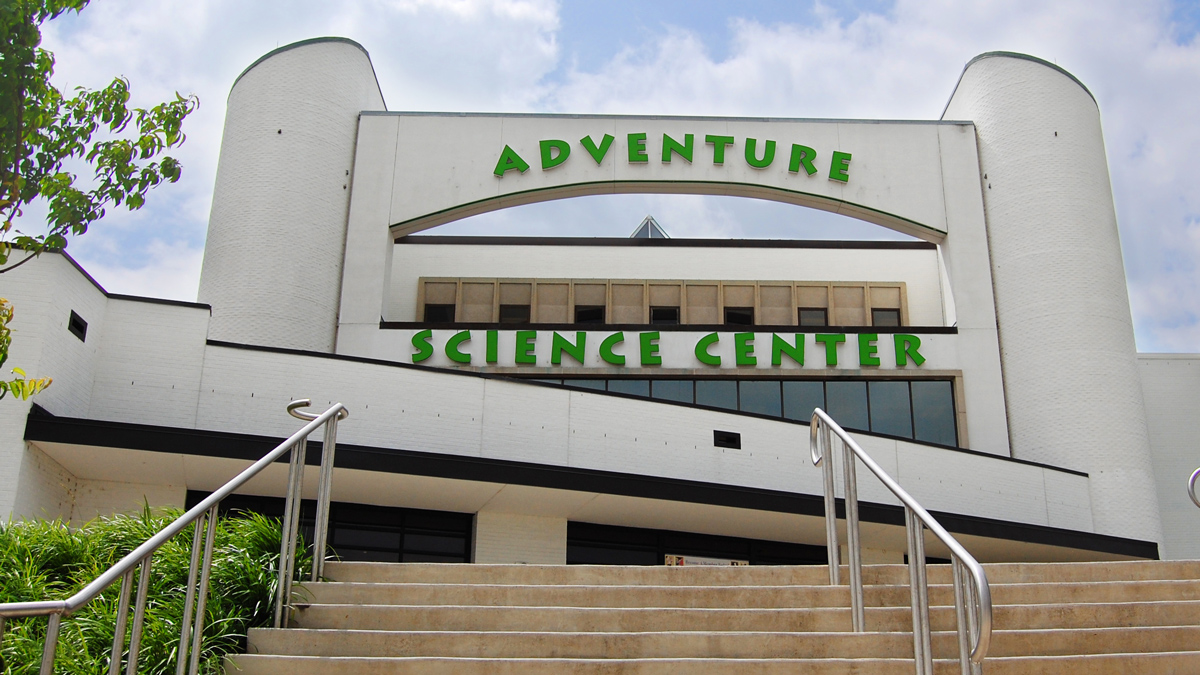Some people may think it absurd to travel hundreds or thousands of miles to see an event that will last less than 3 minutes, but millions of people are expected to do just that to witness the total solar eclipse on Aug. 21. In addition to watching this breathtaking celestial show, there are many other things to see and do in and around the eclipse path.
The eclipse will cross the U.S. from Oregon to South Carolina. Skywatchers inside the "path of totality" will see the moon completely cover the disk of the sun. The path is about 70 miles wide and more than 2,000 miles long. It crosses through deserts, forests, national parks and cities.
Here are six suggestions of great places to see the eclipse, ranging from contemporary to eclectic venues. [What You’ll See During the 2017 Total Solar Eclipse]

The Wyoming eclipse festival
It's very likely that the most popular spot in Wyoming to watch the eclipse will be in Casper, the state's second-largest city, with a population of about 56,000. It's also home to the 2017 Astrocon, the national convention of the Astronomical League, which will be held at the Parkway Plaza Hotel Convention Center from Aug. 16 through Aug. 19. The conference will feature talks on astronomy and space science, future missions to explore the cosmos, telescope technology and use, and astrophotography, as well as such events as star parties.
Because of the popularity of Astrocon, in the days leading up to the eclipse I suppose being in Casper will be similar to being in Cooperstown, New York, in the days leading up to the annual summertime Baseball Hall of Fame ceremonies; like the die-hard baseball fans who gravitate to that New York village, I'm willing to bet that die-hard umbraphiles (people who love total eclipses) and neophyte astronomers alike will gravitate to Casper this August.
Get the Space.com Newsletter
Breaking space news, the latest updates on rocket launches, skywatching events and more!
There will also be a number of other events and activities in and around Casper to keep visitors occupied in the days leading up to "E-Day" on Aug. 21.

Carhenge in Alliance, Nebraska
If you're looking for a truly unique place to view the total solar eclipse, try Carhenge in Alliance, Nebraska. Here is a replica of the ancient Stonehenge of England's Salisbury Plain, except instead of stone slabs, cars are used.The artist of this one-of-a-kind sculpture, Jim Reinders, built it as a memorial to his father. Thirty-nine automobiles were placed to assume the same proportions as Stonehenge with the circle measuring approximately 96 feet (29 meters) in diameter. A 1962 Cadillac marks the heel stone. It was dedicated on the day of the summer solstice in 1987 and draws about 60,000 people each year. Carhenge is in the path of totality. How many will gather here on eclipse day is anybody's guess, but it certainly will make for an interesting photo op!
St. Joseph's "eclipse barbeque"
What could be better than watching the moon completely blot out the sun from the midlands of America?Missouri is known as the Show Me State, and come Aug. 21, the sun and moon will give St. Joe a show it will not soon forget.
A weekend of workshops and lectures is happening in St. Joseph leading up to the eclipse with a free public observing event at Rosecrans Memorial Airport, where the duration of totality will be 2 minutes and 39 seconds; that's only 1 second less than the maximum possible for this eclipse. Michael E. Bakich, a senior editor of Astronomy magazine, is organizing the event (under the title of his LLC, Front Page Science). He realized in 1996 that the centerline of this year’s eclipse would pass through St. Joseph, the city where his wife grew up and where her parents still reside. What started out as planning for a simple "eclipse barbeque," ultimately has grown into this major public event.

Southern Illinois University (and a vineyard)
The point along the eclipse track where totality will last the longest — 2 minutes and 40.2 seconds — lies inside Giant City State Park in southern Illinois, and it's literally at the front door of the Blue Sky Vineyard (3150 S Rocky Comfort Road) in Makanda.
"Come and enjoy the fruits of our labor," notes Blue Sky's winemaker, Karen Hand, on the company's website. And, may I add, what better way to celebrate the Great American Eclipse than with a glass of wine? Hopefully, there will be a blue sky on eclipse day.
If you take State Route 51 (South Illinois Avenue) about 16 miles to the north, you’ll come to Southern Illinois University (SIU), which in association with the city of Carbondale, will be hosting a public eclipse- viewing session from Saluki Stadium, complete with eclipse tailgating, presentations, a citizen-science area and telescope viewing. For eclipse watchers who arrive early, Carbondale is hosting other events and festivities, starting on Aug. 19, including live music and an eclipse marketplace.
Incidentally, Carbondale is not only in the path of this year's total eclipse, but also finds itself in the path of the next total solar eclipse to pass over the United States in 2024. For this reason, SIU is billing Carbondale as the "Eclipse Crossroads of America."
The point of greatest eclipse
http://www.visithopkinsville.com/listing/solar-eclipse-2017/
Hopkinsville, Kentucky, with a population of 32,483, is the ninth largest city in the Blue Grass State and is the population center that is closest to the point of Greatest Eclipse, where the axis of the moon's shadow passes closest to the center of Earth. This will occur about 12 miles, or 19 kilometers, northwest of the city center. It's also where the width of the moon's shadow is widest, the altitude of the sun in the sky near its highest and the duration of totality nearly the longest (2 minutes and 40.1 seconds).
Recognizing this, the city will offer certified viewing sites and science seminars, and a movie series. City organizers are also moving the now rebranded "Summer Salute" festival to coincide with the eclipse.
By the way, if you're hoping to find lodging anywhere in the vicinity, forget it. Everything has been solidly booked here since 2013! It’s expected that Hopkinsville will vie with Carbondale for the greatest numbers of eclipse watchers expected to congregate in any one place along the eclipse track. The man whose farm (on Stone Quarry Road) happens to coincide with the point of Greatest Eclipse is prepared for the crowds, noted in an interview in Eclipse Bulletin "Maybe I'll let my grandkids set up a lemonade stand. Except the bureaucrats will want them to get a license."

Music city
http://www.adventuresci.org/eclipse2017/
Question: What are the odds that a famous country singer like Shania Twain, Garth Brooks or Martina McBride will come up with song to commemorate the day the sun went out in Music City? August 21 might actually be the one day all the music in Nashville stops for a while as everyone gapes at the darkening sky.
The Adventure Science Center in Nashville, Tennessee, is a nonprofit science museum for children and it will host a public eclipse event. In the days leading up to the eclipse they will include hands-on demonstrations. The science center is also home to the Sudekum Planetarium, where, at the center of the Judith Payne Turner Theatre's 63-foot dome, is a Goto Chiron optical star projector, capable of projecting up to 6.5 million stars. The Chiron's breathtakingly realistic night sky works in tandem with a Digistar 5 full dome projection system. This summer's sky show, "ECLIPSE: The Sun Revealed," takes viewers on a journey through the historical and cultural view of eclipses, the geometry that gives us eclipses, how to safely view an eclipse, and even gives a firsthand account of one eclipse chaser's experience during a total solar eclipse. Watch the trailer here: https://www.youtube.com/watch?v=IUMzjfn-v7g
Joe Rao serves as an instructor and guest lecturer at New York's Hayden Planetarium. He writes about astronomy for Natural History magazine, the Farmers’ Almanac and other publications, and he is also an on-camera meteorologist for Fios1 News in Rye Brook, NY.
Follow us @Spacedotcom, Facebook and Google+. Original article on Space.com.
Join our Space Forums to keep talking space on the latest missions, night sky and more! And if you have a news tip, correction or comment, let us know at: community@space.com.

Joe Rao is Space.com's skywatching columnist, as well as a veteran meteorologist and eclipse chaser who also serves as an instructor and guest lecturer at New York's Hayden Planetarium. He writes about astronomy for Natural History magazine, Sky & Telescope and other publications. Joe is an 8-time Emmy-nominated meteorologist who served the Putnam Valley region of New York for over 21 years. You can find him on Twitter and YouTube tracking lunar and solar eclipses, meteor showers and more. To find out Joe's latest project, visit him on Twitter.









